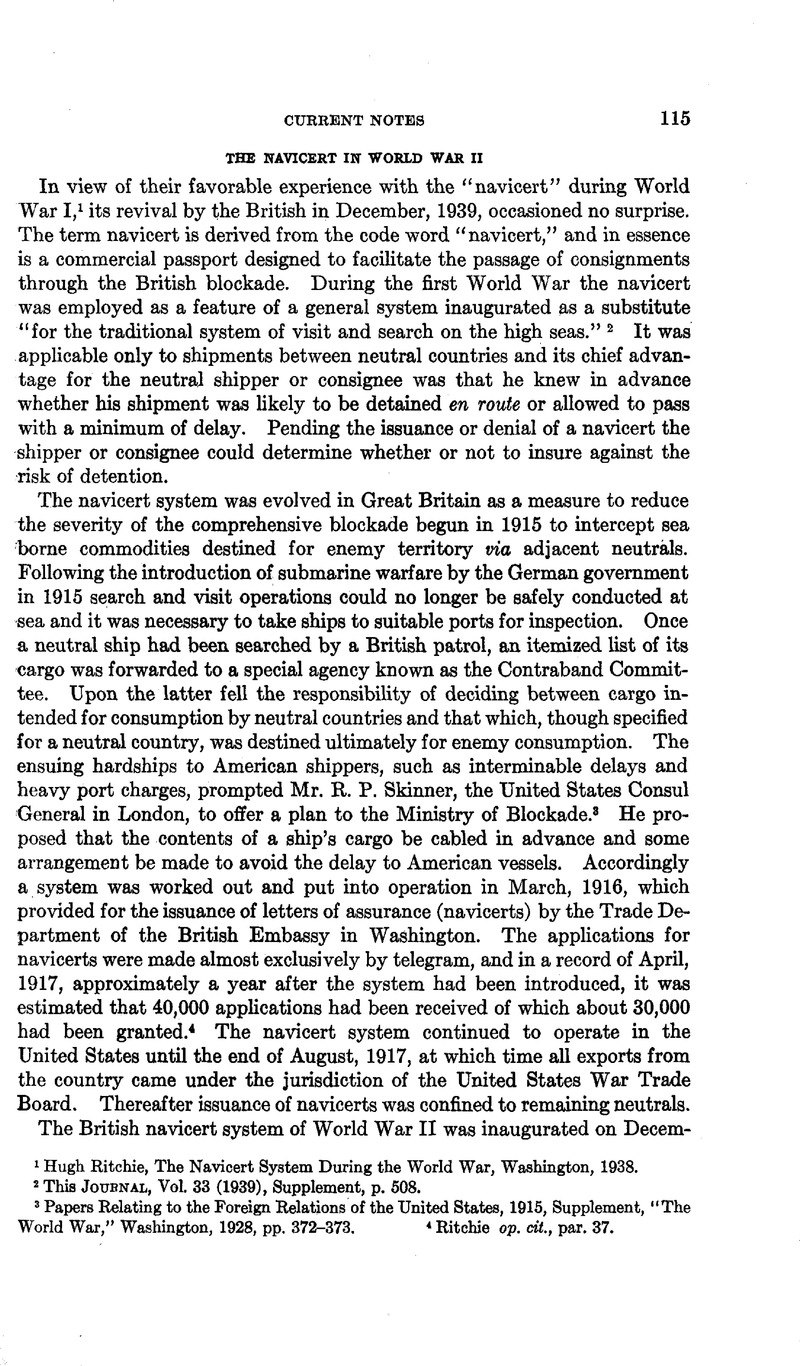Published online by Cambridge University Press: 12 April 2017

1 Hugh Ritchie, The Navicert System During the World War, Washington, 1938.
2 This Journal, Vol. 33 (1939), Supplement, p. 508.
3 Papers Relating to the Foreign Relations of the United States, 1915, Supplement, “The World War,” Washington, 1928, pp. 372–373.
4 Ritchie op. cit., par. 37.
5 British Embassy Press Release, November 17, 1939.
6 British Embassy Press Release No. 26, August 2, 1940.
7 British Embassy Press Release No. 36, November 15,1940. Applications for navicerts to Sweden and Finland were required to be made to the Swedish Government Cargoes Clearance Committee and the Finnish American Trading Corporation in New York City.
8 British Embassy Press Release No. 38, December 11, 1940.
9 British Embassy Press Release No. 47, March 10, 1941. An “enemy” company was construed as being “a company situated or incorporated in Germany or Italy or other enemy territory or a subsidiary company (in any country) of a company whose principal place of business is in enemy territory, or a company whose name is included in the British Statutory List (list of persons specified as enemies under the Trading with Enemy Act).”
10 For a discussion of this problem, see Malcolm Moos, “Swiss Neutrality,” The Yale Review, Vol. 33 (1943), pp. 131–132.
11 British Embassy Press Release, June 23,1941.
12 Ritchie, op. cit., pars. 30–31.
13 Personal letter, Blackwood, A. T., British Vice Consul, to Malcolm Moos, Baltimore, Maryland, November 17, 1943 Google Scholar.
14 British Embassy Press Release, February 13, 1942. “The Embassy desires to stress that the foregoing arrangements relate only to United States exports by ship, post, and plane to present navicert countries of destination. In particular the procedure governing shipments from Europe to the United States is not affected by the closing down of the navicert system in the United States and remains unchanged.”
15 For a discussion of a different view see this Journal, Vol. 33 (1939), Supplement, p. 815. “It seems clearly improper to suggest that a belligerent should allocate a neutral quota.”